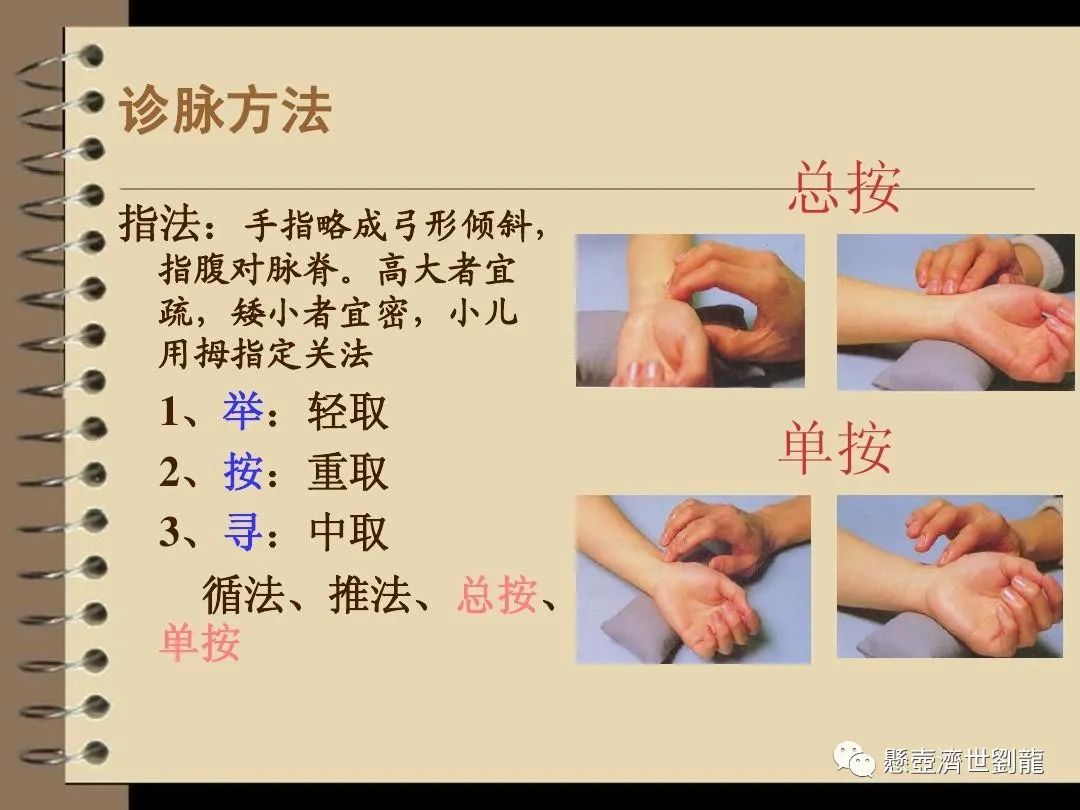
Pulse diagnosis (切诊, qiè zhěn) is the primary focus of this text. The “Pulse Diagnosis Method” (切脉诊断法, qiè mài zhěn duàn fǎ) is one of the most sophisticated and unique diagnostic methods in Chinese medicine. Many pathological and physiological changes in patients can be clearly displayed through the pulse. Learning the basic concepts and understanding of pulse diagnosis involves examining the radial artery of both hands to assess disease. The practitioner uses the three fingers of the left and right hands (the index, middle, and ring fingers) to carefully palpate the pulse in order to seek the essence of the disease and the direction of treatment. Although the human body has numerous blood vessels and there is no difference in the anatomical structure of the left and right hands, how can we differentiate the pulse at the radial artery into the left and right positions (寸, cùn; 关, guān; 尺, chǐ) to understand the physiological and pathological changes of the internal organs? The reasoning behind this remains unknown, but it is certain that the radial arteries of both hands serve as a “reflection zone” for physiological and pathological changes within the body. The conditions of the internal organs will manifest in the “pulsation” and “external contour” of the radial arteries, and a comprehensive system of pulse diagnosis has been developed through the repeated refinement of the correlation between “disease type -> pulse type -> disease” based on clinical experiences.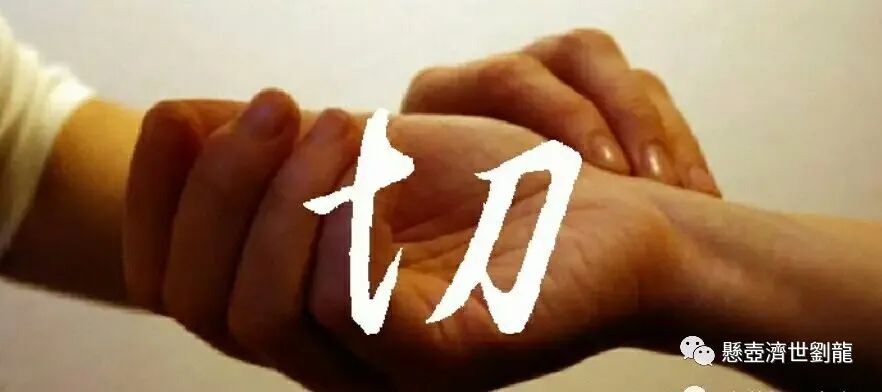
The purpose of pulse diagnosis is to achieve an accurate pathological diagnosis. The sensations felt under the fingers are analyzed and studied as the basis for treatment prescriptions, which is referred to in this text as “pulse quality” (脉象, mài xiàng). The term “pulse quality” actually encompasses two main categories: one is the “pulsation” of the pulse vessel; the other is the “shape” of the pulse vessel. The characteristics of the radial arteries in both hands include: 1. [Pulsation]: which includes rapid, slow, strong and forceful, weak and feeble, floating, sinking, convex, concave, slippery, and rough. 2. [Shape]: which includes thick, thin, soft, hard, long, short, string-like, and hooked variations. By combining the above “external shapes” and “pulsations” with the location of the pulse, the practitioner can arrive at a pathological conclusion. Pulse diagnosis (切诊, qiè zhěn) refers to the method by which a physician uses their fingers to palpate the arterial pulsation of the patient to explore the pulse quality and thus understand the condition of the patient.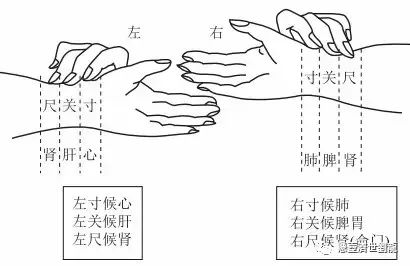
The pulse palpation sites can be divided into three methods: comprehensive examination (遍诊法, piàn zhěn fǎ), three positions examination (三部诊法, sān bù zhěn fǎ), and cun-kou examination (寸口诊法, cùn kǒu zhěn fǎ), with the cun-kou method being the most commonly used. The cun-kou is located at the radial artery pulsation point behind both wrists, divided into three sections: cun (寸, cùn), guan (关, guān), and chi (尺, chǐ). The high bone at the back of the palm is the guan, the section before it is the cun, and the section behind it is the chi. The cun-kou pulse can reflect the qi of the internal organs: the left cun reflects the heart and small intestine; the left guan reflects the liver and gallbladder; the left chi reflects the kidney and bladder; the right cun reflects the lung; the right guan reflects the spleen and stomach; the right chi reflects the kidney. When performing pulse diagnosis, attention should be paid to the time, posture, and technique. The examination should be conducted in the morning when the patient is at rest; if the patient has been active, they should rest for about 15 minutes before the pulse diagnosis. The patient can be seated or lying down, with the arms extended and palms facing up, bringing the arms close to the same level as the heart. During pulse diagnosis, all three fingers should palpate the pulse simultaneously, applying balanced pressure, starting lightly and increasing to moderate and then heavy pressure, categorized as floating (浮取, fú qǔ), middle (中取, zhōng qǔ), and sinking (沉取, chén qǔ). The pulse diagnosis should last no less than one minute. In healthy individuals, the pulse should beat four times with each breath, with pulses present in the cun, guan, and chi positions, not floating or sinking, and should be gentle yet forceful, with the chi pulse being forceful when sinking.
Common pulse types include floating pulse (浮脉, fú mài), sinking pulse (沉脉, chén mài), slow pulse (迟脉, chí mài), rapid pulse (数脉, shù mài), weak pulse (虚脉, xū mài), strong pulse (实脉, shí mài), slippery pulse (滑脉, huá mài), surging pulse (洪脉, hóng mài), thin pulse (细脉, xì mài), and string-like pulse (弦脉, xián mài). Floating pulse: can be felt with light pressure but diminishes with heavy pressure. Main condition: exterior syndrome due to external pathogenic factors remaining on the surface, where the defensive qi resists the pathogen, causing the pulse to be superficial. A strong floating pulse indicates an exterior excess; a weak floating pulse indicates an exterior deficiency. Internal injuries from prolonged illness due to deficiency of yin blood and insufficient yang qi, leading to floating pulse that is large and weak, indicating a critical condition. Sinking pulse: cannot be felt with light pressure but can be felt with heavy pressure. Main condition: interior syndrome. A strong sinking pulse indicates interior excess; a weak sinking pulse indicates interior deficiency. Pathogenic factors stagnate in the interior, obstructing qi and blood flow, leading to a strong sinking pulse indicating interior excess; weakness of the organs leads to yang deficiency and sinking pulse that is weak. Slow pulse: a pulse rate of less than 60 beats per minute. Main condition: cold syndrome. A strong slow pulse indicates real cold; a weak slow pulse indicates false cold. Cold causes stagnation, slowing the movement of qi and blood, resulting in a strong slow pulse indicating real cold syndrome. Yang qi deficiency leads to weak movement of qi and blood, resulting in a weak slow pulse indicating false cold syndrome.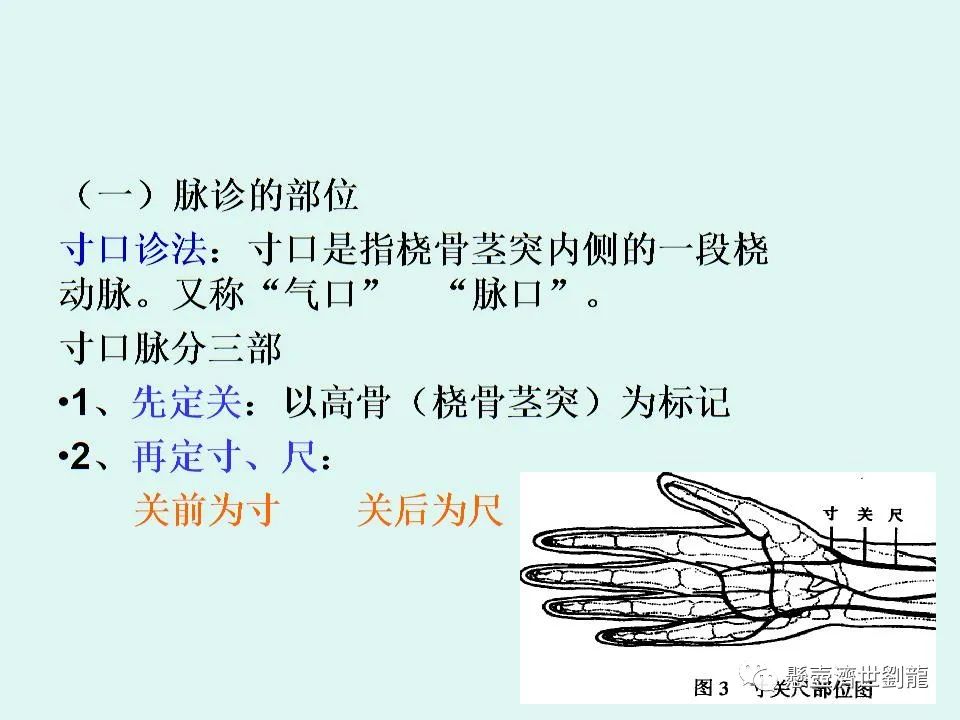
Rapid pulse: a pulse rate of over 90 beats per minute. Main condition: heat syndrome. A strong rapid pulse indicates real heat; a weak rapid pulse indicates false heat. Initial onset of external heat illness, with excessive internal heat, leads to a rapid and strong pulse indicating real heat. Yin deficiency with excessive fire, insufficient fluids and blood, leads to internal heat, resulting in a rapid and weak pulse indicating false heat. Weak pulse: all three positions (cun, guan, chi) have weak pulses. Heavy pressure reveals emptiness. Main condition: deficiency syndrome, often due to deficiency of qi and blood, making it difficult to generate a pulse, hence the pulse feels empty. Strong pulse: all three positions have strong pulses. Main condition: excess syndrome, where pathogenic qi is strong and righteous qi is sufficient, leading to a full pulse. Slippery pulse: feels smooth and flowing, like pressing a marble. Commonly seen in young and healthy individuals with abundant qi and blood. In pregnant women, a slippery pulse indicates strong qi and blood nourishing the fetus, which is a physiological phenomenon. Surging pulse: large and forceful, like surging waves, with a strong rise and fall. Main condition: excessive heat. Internal heat expands the pulse vessels, leading to a wide pulse shape, with strong fluctuations due to excessive heat. Thin pulse: feels thin like a thread, with distinct rises and falls. Main condition: deficiency syndrome, often seen in yin deficiency and blood deficiency.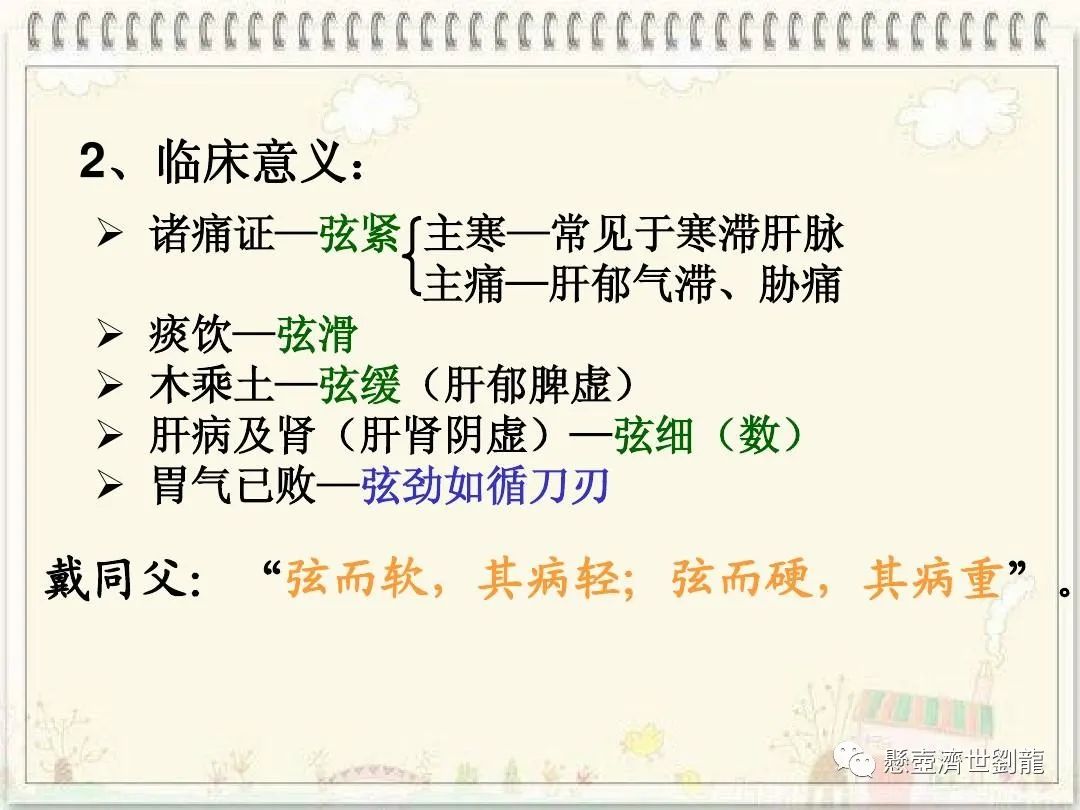
Also indicates dampness. Deficiency of yin blood cannot fill the pulse vessels, or dampness obstructs the pulse vessels, leading to a thin pulse. String-like pulse: straight and long, firm under the fingers, like pressing a guitar string. Main conditions: liver and gallbladder diseases, pain syndromes, phlegm and fluid retention. Qi stagnation or phlegm retention leads to a tight and string-like pulse. The abdomen is an important area of the human body, with the area above the navel belonging to the stomach, below the navel belonging to the intestines, the large abdomen belonging to the spleen, the area around the navel belonging to the kidneys, and the lower abdomen belonging to the liver. By touching and pressing with the fingers, one can understand the local conditions of heat and cold, softness and hardness, fullness and swelling, and tenderness, which helps to understand the conditions of the internal organs. Generally, the diagnosis is made by touching and pressing the xu li point (虚里穴, xū lǐ xué), where the heart’s pulsation can be felt.
Deficiency syndromes: noticeable pulsation, with pressure revealing a weak pulse. Lung qi deficiency syndrome: scattered and rapid pulsation. Liver qi stagnation: distension and pain in both sides, with pain radiating. Liver deficiency: pain in the sides that feels better with pressure, with weakness under pressure. Blood stasis: swelling and pain under the ribs, with pain that resists pressure, and the pain does not move. Liver cancer: swelling under the ribs with an uneven surface upon palpation, which should raise suspicion of liver cancer. Liver qi invading the stomach: distension and pain in the stomach, with pain radiating to both sides. Stomach cold: sudden severe stomach pain, with pain that resists pressure, and a feeling of cold. Qi deficiency: long-standing stomach and abdominal pain, with pain that eases or stops upon pressure. Deficiency: abdominal pain that feels better with warmth and pressure, with a soft and weak abdomen. Excess: abdominal pain with fullness that resists pressure, with a firm abdomen, producing a heavy and dull sound upon percussion, or with palpable masses that do not move.
 Consultation WeChat ID
Consultation WeChat ID

